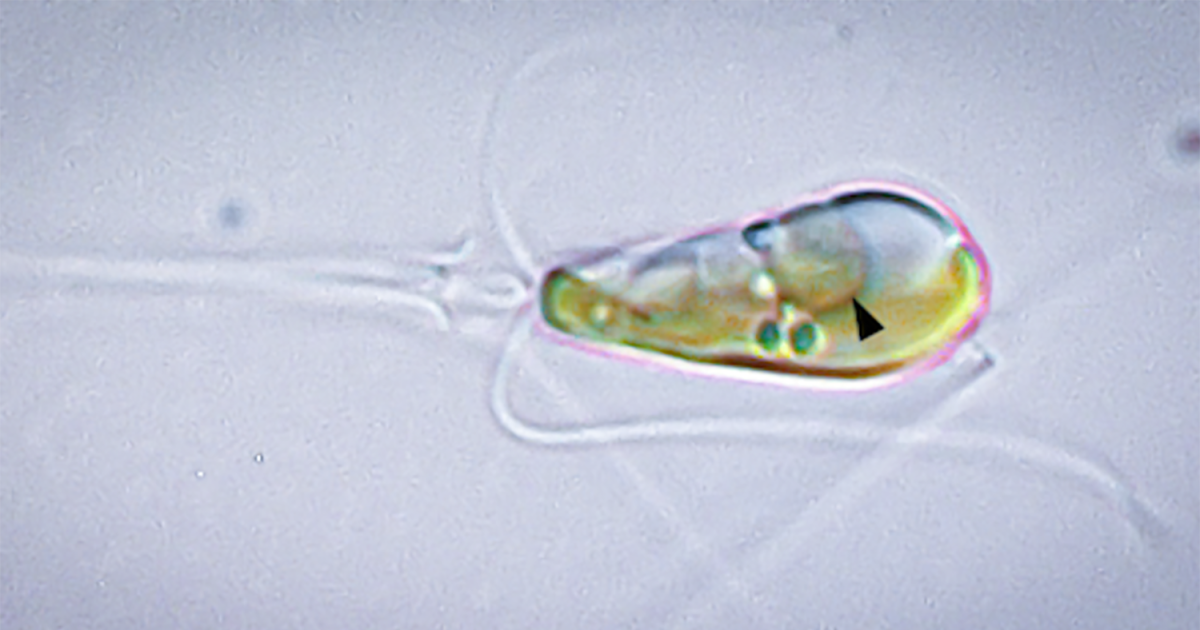- cross-posted to:
- [email protected]
- cross-posted to:
- [email protected]
From the article:
Scientists have caught a once-in-a-billion-years evolutionary event in progress, as two lifeforms have merged into one organism that boasts abilities its peers would envy. Last time this happened (1.6 billion years ago), certain advanced cells absorbed a type of bacteria that could harvest energy from sunlight. These became organelles called chloroplasts, which gave sunlight-harvesting abilities, as well as a fetching green color, to a group of lifeforms you might have heard of – plants.
And now, scientists have discovered that it’s happening again. A species of algae called Braarudosphaera bigelowii was found to have engulfed a cyanobacterium that lets them do something that algae, and plants in general, can’t normally do – “fixing” nitrogen straight from the air, and combining it with other elements to create more useful compounds.



As any farmer or gardener will tell you, nitrogen is critical for plant growth, and for most plants it’s obtained via the soil. Soil nitrogen can be depleted if not replenished (in an agricultural context, by compost or fertilizer), but there’s plentiful nitrogen in the atmosphere (which is mostly nitrogen, actually) so any plant that has nitrogen fixing abilities has constant access to this critical nutrient. There currently exist nitrogen-fixing plants (peas and clover for example), but they don’t actually do it on their own, they rely on a symbiotic relationship with bacteria.
Ooh could this make for a truly green way to capture carbon and make fertilizer? It would be sweet to have a closed system that grows the algea with solar then you collect it squeze the water out, bury it then start again
Soo, it’s not something that doesn’t happen now and then?
No, the symbiotic relationship means that the bacteria live in/on the plant, much like we have a gut biome of organisms that are discrete from us, but have symbiosis with us.
The article is about a bacterium becoming engulfed within an algal cell and slowly becoming an organelle of that cell.
This process begins as a type of symbiosis, but at the end of it you would no longer call it symbiotic, as it ends as a single organism.
The breathless yammering about “the last time this happened we got plants” seems a little much though. The last time this happened that we know of was 1.5 billion years ago and we got plants. The fact we’ve caught it in the act right now sounds like this might just be a much more common phenomenon than we thought.
The article says
It’s possible the only reason we’re aware of these events is because they were massive breakthroughs. After watching it happen, we may have more information about how to spot other times it has happened.
No plants are actually able to break down nitrogen gas. The bacteria that can break it down live in their root systems, not in the plant cells. The root systems are an ecosystem for the bacteria, much loke yoir moith and intestines are for useful bacteria. What this study describes is an algae cell incorporating a nitrogen fixing bacteria into it’s cellular structure, which as far as we can tell has only happened twice in the history of life on earth: when a large bacteria incorporated a smaller one, thus creating eularyotic cells with mitochondria (which was our last common ancestor with plants) and when another eularyotic cell absorbed a photosynthetic bacteria, creating plant chloroplasts.
This is interesting, thank you. So… I’m guessing we don’t really want wild plants to gain this ability? We really want to control this ability? What would happen if all plants gained this ability – would we have any nitrogen left in the atmosphere? I’m guessing we personally (as a species) need the current mixture of air compounds to be a certain way (the way it is now, pretty much) in order not to be poisoned? I’ve heard about oxygen poisoning – that’s a thing, right?
Or we might want to have some plants gain this ability in order to do terraforming of another planet which has mainly nitrogen in its atmosphere, very far into the future? Would be cool. Maybe.
The N2 in the atmosphere go through a lot of conversions in the bacteria and plant but eventually ends up as nitrates which then break down and release N2 back in the atmosphere.
So no we won’t end up with no nitrogen in the atmosphere. Generally we want more nitrogen fixed as most crops deplete the nitrogen and only crops that host the nitrogen fixing bacteria can replenish the fixed nitrogen in the soil.
This is the main reason for crop rotations. Farmers grow corn that depletes the fixed nitrogen and then soy that has bacteria that replenishes it.
It would be great if corn got that feature as a lot of fossil fuels are used to fix nitrogen for fertilizers. See the Haber process for more info. https://en.m.wikipedia.org/wiki/Haber_process
There’s a variety of maize that does fix nitrogen:
https://www.theatlantic.com/science/archive/2018/08/amaizeballs/567140/
There are some political and technical hurdles to adapting it more broadly to the agricultural industry.
Fun fact, one half of the invention of the Haber Bosch process Fritz Haber also invented chemical warfare.
He’s partially responsible for saving perhaps billions of lives through the Haber Bosch process and killing millions through the use and proliferation of chemical weapons.
We did get this banger out of it though
So long as he’s net positive, eh…? 🥹
Thank you for sharing all this insight! Cheers!
Oh wow, didn’t even think about that. It’d be like the great oxygen event which almost killed all life in earth https://en.m.wikipedia.org/wiki/Great_Oxidation_Event